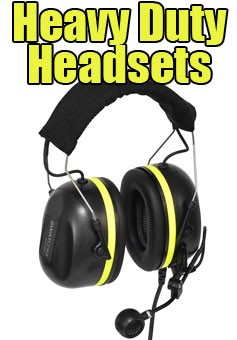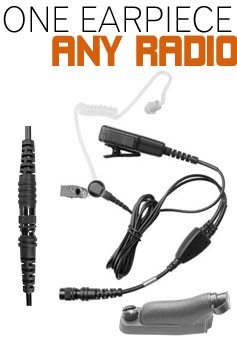
In a world that often seems to speak in digital signals and typed text, radio communication can feel like a vestige of an older, quieter era. Yet, for hobbyists, emergency professionals, and enthusiasts alike, radio waves remain a vital and vibrant method of connection. However, dialing into the proper language and etiquette that governs this unique form of communication can often be overlooked.
Cherishing the Wave, Respecting the Code
Radio waves are more than just a means of two-way transfer—they are carriers of urgency, beacons of help, and conduits of camaraderie. For those who share the airwaves, understanding the unspoken rules of communication is as important as the equipment they wield. Here we explore the nuanced "dos" and "don’ts" of radio communication, shedding light on the subtle art of relaying messages through the silent screams of the electromagnetic spectrum.
The Golden Rules of Radio Etiquette
Whether you're an amateur operator or a seasoned professional, the principles of radio etiquette are universal. They ensure clarity, courtesy, and efficiency in a world where every word counts.
Do: Listen Before You Speak
The cardinal rule of radio communication is to always listen before transmitting. This step ensures that you’re not interrupting, that you have the current information, and that you’re not speaking over someone who may already be trying to reach you.
Why It Matters
Failing to follow this rule can lead to misunderstandings, missed messages, and, in emergencies, potentially life-threatening outcomes.
Do: Use Pro-Words and Standard Procedures
Adopting standardized language can seem formal, but it's vital for smooth and effective communication. Phrases such as "over," "read back," and "roger" have specific meanings that prevent confusion.
Why It Matters
Precision in language is crucial, particularly in high-pressure situations. Standardized terms help ensure that everyone is on the same page, instantly.
Do: Keep Your Message Clear and Concise
In the realm of radio waves, verbal economy reigns. Long-winded transmissions can tie up the frequency and make it difficult for others with critical information to get through.
Why It Matters
Clarity and brevity are essential for making sure your message is understood, especially considering potential signal degradation over long distances and disruptive environments.
Do: Identify Yourself Properly
Every radio user has a call sign, and using it correctly is more than a formality—it's a safety measure. Identify each other at the beginning and end of every exchange.
Why It Matters
Your call sign tells others who you are and can help establish a rapport that can be vital during extended or stressful communications.
Don't: Speak Too Quickly or Too Slowly
The speed at which you talk should be natural for listeners. While this can vary depending on the context, it’s best to aim for a pace that allows for easy comprehension.
Why It Matters
Speaking too quickly can lead to information being lost. Speaking too slowly can waste time and become frustrating for others trying to communicate.
Don't: Use Prohibited Language
Every band and channel has its own culture and expectations regarding appropriate language. Know the rules, and respect them.
Why It Matters
In addition to the potential for distracting or offending other users, some language can have negative legal or professional implications.
Don't: Carry Out Extraneous Chatter
While some small talk is natural and can help maintain a friendly atmosphere, excessive non-essential communication (or "chatter") can disrupt more important messages.
Why It Matters
Bearing down on the PTT (push-to-talk) button without a clear purpose can tie up precious airtime and hinder the operation of others who may be in need.
The Dos and Don’ts of Emergency Communication
When every second counts, effective radio operation is crucial. Here are the guidelines you should follow during emergencies to ensure that help is received and dispatched as swiftly as possible.
Do: Remain Calm and Clear
Maintaining a level head is the first rule of any emergency, especially when transmitting over the radio. State the nature of your emergency and your location with utmost clarity.
Why It Matters
Panicked transmissions can be difficult to understand and might delay or confuse any rescue or response efforts.
Do: Conserve Power and Airtime
An emergency can be prolonged, and resources—like battery power and available frequencies—may be finite. Transmit only when necessary and keep your messages cogent.
Why It Matters
Proper conservation ensures that your radio equipment remains operable and that the channels stay clear for essential communication.
Don’t: Use Jargon or Non-Standard Terms
While technical terms are often appropriate, using jargon or terms that are not widely understood can lead to confusion and miscommunication.
Why It Matters
Listeners must understand every word in an emergency broadcast; there’s no room for misunderstandings.
Don’t: Broadcast False Information
In a crisis, every word spoken is potentially every action taken. Broadcasting inaccurate information can lead to wasted time and missed opportunities to help those in need.
Why It Matters
False broadcasts can divert resources from genuine emergencies and can damage your credibility as a radio operator.
Navigating the Specifics of Radio Use
While the basics can take you far, certain situations require additional care and attention to ensure that your radio goes from being a lifeline to an asset. Here are some specific pointers for different use cases.
Off-Roaders and Hikers:
Staying in touch while trekking through the wilderness requires a special set of skills. Make sure you’re well-versed in the topography, keep your transmission power low to avoid unnecessary interference, and always pack extra batteries.
Boaters and Fishermen:
On the high seas, your radio is your oracle. Check the weather regularly, maintain a log of your transmissions and responses, and ensure that everyone on board knows how to operate the radio in case of an emergency.
Aircraft Pilots and Control Towers:
Precision is key when lives are in the balance. Familiarize yourself with the phonetic alphabet, practice drills with your team, and ensure your radio equipment is meticulously maintained.
Radios as Social Tools
While radios are often associated with serious tasks, they also serve as social hubs and sources of entertainment.
Do: Be Sociable and Respectful
Chatting over the air can be a pleasure, but remember to keep the airwaves clear for important transmissions. When the chatter is free, feel free to join in—but always with the intentions of fostering a community, not disrupting it.
Why It Matters
A diligent balance is necessary between creating a welcoming atmosphere and ensuring that others who need the channel for its primary use—communication—can access it, too.
Don't: Discuss Private or Personal Matters
The open airwaves are no place for sensitive or private conversations. Anything you say can potentially be heard by anyone, including unauthorized personnel.
Why It Matters
Maintaining a level of confidentiality about personal matters ensures your safety and that of others who share the airwaves.
Conclusion
Radio communication is a gift and a responsibility. When used properly, it can save lives, build communities, and provide joy. By adhering to these dos and don’ts, enthusiasts and professionals can ensure that the waves we send out into the world are clear, kind, and purposeful.
In the end, radio communication is about much more than just the act of speaking into a microphone; it's about the bridges we build, the help we impart, and the unseen connections we foster across the ether. Abide by these unspoken rules, and watch how radio transforms from a simple tool into a powerful medium of human connection.
-

Licenced Two Way Radio (Kirisun DP405) with Earpiece
The Kirisun DP405 emerges as a comprehensive solution for professional comm...
-

Licence Free Two Way Radio (Kirisun DP405S) with Earpiece
Discover the Kirisun DP405S, a license-free digital 446 radio with 16 pre-p...
-

Kirisun DP405 / DP405S 6 Bank Charger
Streamline your communication management with the Multi-Unit Charger, a mus...




















